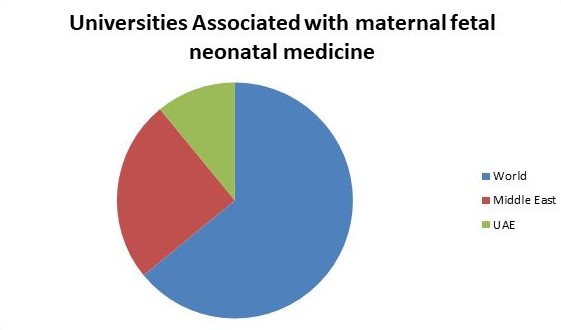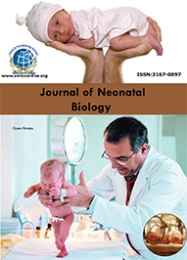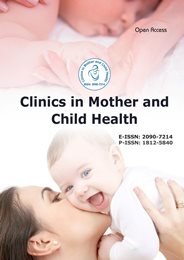Theme: Ensuring Optimal Maternal and New-born care through In-depth review & Analysis of Risk factors
Fetal Medicine 2019
- Ob/Gyn surgeons
- Gynaecology consultants
- MFM Specialists
- perinatologists
- Neonatologists
- Pediatricians
- Pediatric surgeons
- Pediatric Hepatologists
- Child Development Specialists
- Specialists in adolescent medicine
- Academic Professionals
- Research Scholars
- Primary care doctors
- Primary care professionals
- Pediatric Nutritionists and Dietitians
- Pharmacists
- Pediatric Nurses
- Pediatric Gastroenterologists
- Nurses specializing in pediatrics
- Pediatric Physicians
- Manufacturing Medical Devices
- Companies
- Students
Track 1: Neonatology and Perinatology
Neonatology is a one of the sub-department of pediatrics that consists of the special medical care of newborn infants, especially the ill newborn. An incubator is a machinery used to maintain environmental conditions suitable for a neonate. It is main hospital-based specialty and is usually experienced in neonatal intensive care units (NICUs).
Perinatology refers to the specialized care of pregnant women and their newborn babies. Perinatologist provides special care for high-risk pregnancies and is experts in a wide variety of complex maternal-fetal conditions. According to new research results if gestational age is adjusted for as a time-varying covariate, allowing the difference between weeks of gestational age to a very long time. The predicted death or discharge from the neonatal and perinatal unit was estimated and presented graphically by a week of gestational age.
Track 2: Fetal and Neonatal Pathology
Fetal and perinatal pathology is taken to include embryonic, fetal, perinatal and neonatal pathology. It is an examination or clinical investigations of mid-trimester abortuses and for placenta. It’s recommended that placentas be examined from all stillbirths, multiple pregnancies, low birth weight and small-for-gestational-age babies and abnormal pregnancies. Immune hydrops is generally diagnosed antenatally and the autopsy commonly provides confirmation and documentation of the extent of the cardiovascular compromise. In cases of unexplained non-immune hydrops, significant structural abnormalities have usually been excluded by tertiary referral ultrasound examination and in this setting the role of the autopsy is primarily to identify undetected abnormalities, such as congenital cardiac disease, and, more commonly, to facilitate ancillary investigations for the detection of underlying pathologies which are non-detectable sonographically, such as inherited metabolic disorders and a wide range of genetic syndromes.
Pathologists Obstetrics and Gynaecology doctors should be together and supports to treat for Fetal and Neonatal Pathology.
Track 3: Human Fetal Growth and Development
Human fetal development during the fetal period (weeks 9 to 37) following fertilization. The long fetal period (embryonic period) is a time of extensive growth in mass and size as well as ongoing differentiation of organ systems established in the time of embryonic period. Clinically this time of period is generally defined as the Second Trimester and Third Trimester. Generally, many of the critical measurements of growth are now carried out by ultrasound and this period ends at birth. The embryonic period grows and differentiate further during the fetal period and do so at different times.
A better understanding of the gene profiling pathways that lead to developmental anomalies will aid new medical Research approaches for disease treatment and prevention.
Track 4: Electronic Fetal-Maternal Monitoring & Amniocentesis
Now the recent trend is a non-invasive technique in fetal diagnosis and therapy, to promote the progress of perinatal medicine without damaging the fetus. Generally, Amniocentesis are used to collect the amniotic fluid for the diagnosis of physical and chemical properties of the fluid will be replaced by ultrasonic tissue characterization, and non-invasive diagnosis is also useful for the repeated tests. Furthermore, genetic fetal diagnosis is performed by the test of maternal peripheral blood in NIPT, instead of the amniocentesis. And Non-invasive fetal therapy was a dream in the past, and it is real at present by the HIFU technology.
Recent Medicine research shows that new technology used to assess fetal heart activity called fetal electrocardiogram ST segment analysis or STAN.
Track 5: Maternal Health and Fetal Interactions
Far from being a passive organ, the placenta plays a critical role in orchestrating the sequence and intensity of a series of complex maternal–fetal interactions. In essence, the placenta is of dual origin, comprised of both fetally- and maternally derived cells. The decidua, often referred to as the maternal compartment, forms the most superficial layer surrounding the placenta and is densely packed with maternal immune cells. Below this, a layer of fetally derived trophoblast cells secretes hormones and endocrine factors that support both fetal and maternal health. Lastly, maternal blood, descending from decidual spiral arteries, and fetal blood, rising through the umbilical arteries, converge in the villous spaces of what is known as the labyrinth layer, in mice, or the chorionic villi, in humans.
During placentation, a territorial boundary is defined between 2 individuals, the mother and her fetus, and this boundary needs to be in the right place.
Track 6: Pregnancy Complications & High-Risk Pregnancy Factors
A high-risk pregnancy is one that threatens the life of the mother and her fetus. Some pregnancies become more high risk as they progress, while women’s are at increased risk for complications even before they get pregnant for some variety of reasons. Early and regular prenatal care can help many women have healthy pregnancies and deliveries without complications. Many Risk factors for a high-risk pregnancy can include: Existing health conditions, such as diabetes, high blood pressure, or being HIV-positive1, Obesity, and overweight. Obesity increases the risk of high blood pressure, preeclampsia, gestational diabetes, stillbirth, neural tube defects, and cesarean delivery.
Pregnancy is considered as high risk then there are many complications that could be an effect on the health of the mother or baby before, during or after delivery.
Track 7: Multiple Gestations (twins and more)
Multiple births such are much more common today than they were in the past. There are many multiple births today in part because more women are taking infertility treatment, which carries a risk of multiple pregnancies. However, according to current research Guidelines Number of Embryos are Transferred, and the number of treatment-related pregnancies with triplets or more has decreased dramatically. And also, most of the women’s are waiting until later in life to attempt pregnancy, and older women are more likely than younger women to get pregnant with multiples, especially with fertility treatment. Although major medical advances have improved the advanced techniques of multiple births and associated significant medical risks and complications of the mother and children.
Two or more babies that come from the same egg are called identical. That the fertilized egg will split into two or more embryos. It is relatively associated with age, or family Health history.
Track 8: Caesarean Section- Safety and Quality
Caesarean section can be a lifesaving procedure in some circumstances. Other advantages of a planned caesarean section compared with a spontaneous vaginal birth include reduced risk of labour-related morbidities for the baby and reduced risk of vaginal injuries for the mother. It is also associated with a reduced long-term risk of pelvic floor disorders, such as stress incontinence and pelvic organ prolapse although pregnancy itself is a risk factor for these and caesarean section may not protect against them. The most common reason for a caesarean section is a previous caesarean section.
Caesarean sections are mainly associated with short and long term risk which can be prolonged to many years beyond the current delivery and affect the health of the woman, her child, and future pregnancies.
Track 9: Kangaroo Mother Care (KMC):
Kangaroo mother care, sometimes called skin-to-skin care; it is a technique of newborn care where babies kept skin-to-skin with a parent, typically their mother. It is most commonly used for low birth-weight preterm babies, who are more suffer from hypothermi a, then need to admitted in neonatal unit to keep the baby warm and support early breastfeeding. Kangaroo mother care reducing both infant mortality and the risk of hospital-acquired infection, and increasing rates of breastfeeding and weight gain. Skin-to-skin care is used to describe the technique of placing full-term newborns very soon after birth on the bare chest of their mother or father. This also improves rates of breastfeeding and can also lead to improved stability of the heart and breathing rate of the baby.
There are many barriers to implementing kangaroo mother care, including the need for time, social support, medical care, and family acceptance. Barriers within health systems included financing, organization and medical service delivery.
Track 10: Maternal Nutrition and Breast feeding
Women who are giving breastfeeding they should eat a well-balanced diet and drink enough liquids. Although shedding Women will get extra pounds gained during pregnancy may be one of your biggest concerns, strict weight-loss plans are not recommended, especially during the first few months of breastfeeding.
Breast milk contains neurotrophins (molecules that promote nerve cell growth, function and survival)
Track 11: Midwifery Care and Nursing Services
The objective of nursing care is to improve the health, maintain and quality of life and subsistence of patients and to provide treatments to and reduce the troubles of stable patients. Nursing services are provided to patients who cannot cope independently because of various health problems and disabilities resulting from chronic illnesses. Many of nursing services are provided to patients in hospitals, care institutions or at home according to their needs. School health services are also provided to school pupils.
Preterm birth occurred spontaneously or can be many of induced for medical reasons. Male fetuses were at increased risk of preterm birth as well as preterm premature rupture of membranes.
Track 12: Congenital Anomalies, Preterm Birth Defects & Complications
Congenital anomalies are important causes of childhood deaths and infant, chronic illness and disability. Through the resolution on birth defects of the Sitxty-third World Health Assembly (2011), Member States agreed to promote primary prevention and improve the health of children with congenital anomalies by: developing and strengthening registration and surveillance systems, strengthening research and studies on etiology, diagnosis and prevention on developing expertise and building capacity, promoting international cooperation.
The surgical neonate, the new-born submitted to surgery between birth and 28 days of life, requires care in specialized centers in the hospital and offering high-risk neonatal support, with neonatology and Pediatric Surgery specialties.
Track 13: Neonatal Surgery & Complications
Neonatal surgery is recognized as an independent discipline in general surgery, and requiring the expertise of pediatric surgeons to optimizing outcomes in infants with surgical conditions. Survival neonatal surgery has improved dramatically in the past 65 years. Improvements in Survival pediatric surgical outcomes are in part attributable to improved understanding of neonatal physiology, specialized pediatric anesthesia, neonatal critical care including sophisticated cardiopulmonary support, utilization of adjustments in fluid management, parenteral nutrition, refinement of surgical technique, and advances in surgical technology including minimally invasive options.
Neonatal Intensive Care Unit is a specialized unit to treating premature or newly born babies having medical complications and Neonatal Surgeries.
Track 14: Neonatal Nursing & Intensive Care Units
The birth of a baby is a wonderful and very complex process. In part of that physical and emotional changes occur for mother and baby. A baby must make many of physical adjustments to life outside the mother's body. Before birth, eating, breathing, elimination of waste, and immunologic protection all came from the mother. When a baby enters the world, many body systems should change dramatically from the way they functioned during fetal life: The lungs should breathe air, the cardiopulmonary circulation changes will occur; the digestive system also must begin to process food and excrete waste. The kidneys must begin work to balance fluids and chemicals in the body and excrete waste.
Neonatal nurses may function as the primary caregiver for premature infants during the first few months of life.
Track 15: Drugs, Vaccines, and Immunization for New Borns
Immunization means protection from bacteria and viruses. The most effective and safe way to protect children from contagious diseases is by vaccination only. Vaccines are considered a breakthrough in preventive medicines. Vaccines protect child’s health by preventing from contracting severe contagious diseases. All routine vaccines given at Tipat Halav family care centres and at schools is free of charge.
Diphtheria, tetanus, pertussis is a combo vaccine that protects against three very serious diseases.
Track 16: Neonatal Infectious Diseases & Antibiotics
Neonatal sepsis remains a feared cause of morbidity and mortality in the neonatal time of the period. Neonatal, Maternal, and environmental factors are associated with risk of infection, and a combination of prevention strategies and early initiation of therapy are required to prevent adverse outcomes. The following chapter reviews recent trends in epidemiology, and provides an update on risk factors, diagnostic methods and management of neonatal sepsis. Antibiotics can effective for neonatal infections, especially when the pathogen is quickly identified. Instead of relying solely on many of culturing techniques, pathogen identification has improved substantially with advancing technology; however, neonate mortality reduction has not kept pace and remains 25% to 50%. While preterm neonates are particularly high risk, all neonates can develop infection.
Neonatal infection can be acquired, in the birth canal during delivery, in utero transplacentally and from external sources after birth or postpartum.
Track 17: Neonatal Pulmonary Disorder & Resuscitation
The adaptation from intrauterine to extra uterine life involves a rapid and complex orchestration of physiologic changes. Within a minute of life, the newly born infant is subjected to multiple unfamiliar stimuli such as light, cold and noise compared with the dark, warm environment of intrauterine life. In addition, the infant should make the transition from dependence on placental gas exchange to spontaneous air breathing and pulmonary gas exchange. Most of this transition occurs without difficulty. However, multiple maternal, placental, mechanical, and fetal conditions exist that can jeopardize a smooth transition and signal the need for the intervention. It is generally estimated that 6% to 13% of newly born infants will require some degree of active resuscitation for this transition to occur.
More reliance on diaphragmatic excursions over intercostal muscles is physiology significant of the respiratory system in neonates and infants.
Track 18: Neonatal and Pediatric Cardiology
Mainly neonatal care technology should enable caregivers to deliver life-sustaining, non-invasive, developmental care to neonates. The main goal is to provide a quiet and serene environment to protect developing eyes and ears while keeping body temperatures stable. Tele-echocardiography is the potential to bring real-time diagnoses to neonatal facilities without in-house pediatric cardiologists. Many neonates in rural places, smaller cities, and community hospitals do not have immediate access to pediatric sonographers or echocardiogram interpretation by pediatric cardiologists. This can be resulting in suboptimal echocardiogram quality, delay in initiation of medical intervention, unnecessary patient transport, and increased medical expenditures.
Fetal and neonatal heart conditions are congenital heart defects ranging from septal defects to hypoplastic left heart syndrome, Irregular heart rhythms, and prenatal heart failure.
Track 19: Preconception Health or Fertility
Preconceptional health or fertility has been shown to be an important determinant of fertility, fecundity and perinatal outcomes. In recent days the impact of periconceptional factors on developmental programming, and the health of the resultant baby have become increasingly clear. Since fertility specialists care for couples during this critical phase, they have an only unique opportunity to collaborate with the couple to optimise preconceptional health and thus fertility and pregnancy outcomes. Preconception care and counselling is given by Gynaecologist about nutritional habits, medical conditions, and about any factors that could be preventing of getting pregnancy.
Taking of more caffeine while fertility treatments has been associated with reduced fertility.
Track 20: Prevention of Major Obstetric Syndromes
Endometriosis and adenomyosis are characterized by the presence of ectopic endometrium, but also associated with the functional and structural changes in the eutopic endometrium and inner myometrium. Alterations in the inner myometrium occurring in women with adenomyosis and endometriosis may be at the root of a defective remodeling of the myometrial spiral arteries from the onset of decidualization and increased risk of defective deep placentation. The major association of obstetrical syndromes is different types of defective remodelling of the myometrial spiral arteries has been well documented.
The polycystic ovary syndrome is a complex endocrine and metabolic disorder that is associated with the presence of obesity, infertility, and obstetric complications.
Track 21: Obesity and its impact on Neonatal health
The increasing rate of maternal obesity is provides a major challenge to obstetric practice. Maternal obesity can also result in negative outcomes for both women and fetuses. The maternal risks during pregnancy include preeclampsia, and gestational diabetes. Mainly the fetus is at risk for stillbirth and congenital anomalies. Obesity in pregnancy cans effects on health later in life for both mother and child. For women, this type of risks includes heart disease and hypertension. At that time Children have a risk of future obesity and heart disease. Women and their offspring are at increased risk for diabetes and other endocrinal problems.
Recent research results normal weight, overweight, and obese women of childbearing age show a clear correlation between increasing maternal BMI and higher neonatal morbidity.
Track 22: Blood Clotting Disorders and Nephrology
Patients with renal failure on new anticoagulants drugs have experienced to excessive bleeding which can be related to a changed pharmacokinetic profile of the compounds. Then the coagulation system itself, even without any interference of coagulation modifying drugs, it is already profoundly changed during renal failure. Coagulation disorders with either episodes of severe bleeding or thrombosis represent a main important cause for the morbidity and mortality of such patients. The underlying reasons for these coagulation disorders involve the changing interaction of different components of the coagulation system such as the platelets and the vessel wall in the metabolic conditions and the coagulation cascade of renal failure.
The fact about renal failure in children’s, the child has swelling around the eyes in the morning, swelling on ankles, feet and belly. And some more symptoms more tired & more irritable, eating less, pale looking.
Track 23: Common Metabolic Problems in New born
Inherited metabolic disorders are mainly genetic conditions that result in metabolism problems. Most of the people with inherited metabolic disorders have a defective gene that results in an enzyme deficiency. There are many of different genetic metabolic disorders, and their symptoms, treatments, and prognoses of vary widely. Due to the Metabolic Problems in New born will get genetic disorders like Down syndrome, physically handicapped.
Niemann-Pick disease is the metabolic disorder in new borns (babies develop liver enlargement, difficulty feeding, and nerve damage)
Track 24: Neonatal Dermatology and Allergy
The neonatal period comprises the first four weeks of life. That is a period of adaptation where the skin often presents many changes: resulting from a physiological response, transient lesions, others as a consequence of transient diseases and some as markers of severe disorders. However, generally the majority of neonatal skin pustules are not infectious, comprising the benign neonatal pustulosis. Benign neonatal pustuloses are a group of clinical disease that is characterized by pustular eruptions in which a contagious agent is not responsible for its etiology. The most famous one is erythema toxicum neonatorum, and the transient neonatal pustular melanosis and the benign cephalic pustulosis.
The newborn skin stretcher can be separated from adult’s skin stretcher in several ways.
Maternal, fetal-neonatal medicine is an international platform for presenting research about diagnosis, prevention, and management of fetal diseases, exchanging ideas about it and thus, contributes to the dissemination of knowledge in maternal, fetal-neonatal medicine, for the benefit of both the academic and business. We bring together industry executives, maternal, fetal-neonatal pharma and Health care sectors making the conference a perfect platform to network, share views and knowledge through interactive discussions.
-
International Society of Ultrasound in Obstetrics and Gynecology
-
Society for Obstetric Anesthesia and Perinatology
-
Fetal Medicine Foundation
-
British Association of Perinatal Medicine
-
Association for Maternal and Fetal Medicine Management American Academy of Pediatric Dentistry
-
American Board of Pediatrics
-
Society for Maternal-Fetal Medicine
-
Child Health International Foundation
-
International Federation of Gynecology and Obstetrics
-
Turkey Pediatric Society
-
Japanese Nursing Association
-
Pediatrics and Adolescent Medicine
-
Union of European Neonatal & Perinatal Societies
-
Takeda
-
Otsuka
-
Gilead Sciences
-
Johnson & Johnson
-
MEDNAX, Inc
-
AstraZeneca
-
Children’s Hospital of Philadelphia
-
Mattel Children’s Hospital
-
Texas Children’s Hospital
-
Boston Children's Hospital
-
Nationwide Children's Hospital

-
University of Pennsylvania
-
Vanderbilt University
-
Mount Royal University
-
University of Maryland School of Nursing
-
University of Indianapolis
Ativan
BiCitra
Dexamethasone
Epinephrine
Fentanyl
Fluconazole
Rocuronium
Asia Pacific & Middle East:
- Asian Australasian Society of Neurological Surgeons (AASNS)
- Middle East Pediatric Orthopedic Society
- Asian and Oceania Society for Paediatric Radiology
- Asian Pacific Pediatric Association
- Philippine Medical Association
- Asian Society for Pediatric Infectious Diseases
- The Pacific Association of Pediatric Surgeons
- International Primary Care Respiratory Group
- Asian Surgical Association
- Brain Tumor Foundation for Children
- Japanese Society of Pediatric Cardiology
- Asian Society for Pediatric Research
- Pediatric Cardiac Society of India
- Jordan Pediatric Society
- Middle East Pediatric Orthopedic Society
- The Malaysian Pediatric Association
- Israel Gastroenterology Association
- Union of Middle Eastern and Mediterranean Pediatric Societies
- Asian Association of Pediatric Surgeons
- International Primary Care Respiratory Group
Europe:
- Association of Surgeons of the Netherlands
- Italian Society of Pediatrics
- International Society for Social Pediatrics
- Society of Residents in Surgery of the Netherlands
- European Paediatric surgeons Association
- Baltic Association of Paediatric Surgeons Tallinn
- European Paediatric Association
- Pediatric Surgery (EBPS)
- Italian Society of Pediatric Rome, Italy, Europe
- European Society For Developmental Perinatal Paediatric Pharmacology
- Russian Society of Cardiology
- Czech Neonatal society
- European society of Pediatric Neonatal Intensive Care
- European Academy of Paediatrics
- British Association of Paediatric Surgeons (BAPS)
- The Pacific Association of Pediatric Surgeons (PAPS)
- Open Pediatrics Community
- European Society for Paediatric Research (ESPR)
- Association of Surgeons of the Netherlands
- Italian Society of Pediatrics
- International Society for Social Pediatrics
USA:
- American Society for Mohs Surgery
- Alliance Societies – POSNA Rosemont, USA
- Alliance Societies – POSNA Rosemont, USA, North America
- Society for Pediatric Pathology (SPP) New York
- Canada Academy of Pediatric Dentistry Ottawa
- American Pediatric Society Texas City, USA, North America
- Alliance Societies – POSNA Rosemont
- Children’s Leukemic Research Association
- Asian Society for Pediatric Research (ASPR) Virginia
- American Academy of Paediatrics Washington, USA
- American Society for Laser Medicine and Surgery
- USA Society for Pediatric Pathology (SPP)
- American Osteopathic College of Dermatology, USA
- American Academy of Paediatric Dentistry Chicago
- American Academy of Dermatology
- American Board of Dermatology
- American Society for Laser Medicine and Surgery
- Paediatric Societies Congress
Conference Highlights
- Neonatology and Perinatology
- Fetal and Neonatal Pathology
- Human Fetal Growth and Development
- Electronic Fetal-Maternal Monitoring & Amniocentesis
- Maternal Health and Fetal Interactions
- Pregnancy Complications & High-Risk Pregnancy Factors
- Multiple Gestations (twins and more)
- Kangaroo Mother Care
- Caesarean Section- Safety and Quality
- Midwifery Care and Nursing Services
- Maternal Nutrition and Breastfeeding
- Congenital Anomalies, Preterm Birth Defects & Complications
- Neonatal Surgery & Complications
- Neonatal Nursing & Intensive Care Units
- Drugs, Vaccines, and Immunization for New Borns
- Neonatal Infectious Diseases & Antibiotics
- Neonatal Pulmonary Disorder & Resuscitation
- Neonatal and Pediatric Cardiology
- Preconception Health or Fertility
- Prevention of Major Obstetric Syndromes
- Obesity and its impact on Neonatal health
- Blood Clotting Disorders and Nephrology
- Common Metabolic Problems in New born
- Neonatal Dermatology and Allergy
To share your views and research, please click here to register for the Conference.
To Collaborate Scientific Professionals around the World
| Conference Date | May 30-31, 2019 | ||
| Sponsors & Exhibitors |
|
||
| Speaker Opportunity Closed | Day 1 | Day 2 | |
| Poster Opportunity Closed | Click Here to View | ||
Useful Links
Special Issues
All accepted abstracts will be published in respective Our International Journals.
Abstracts will be provided with Digital Object Identifier by









